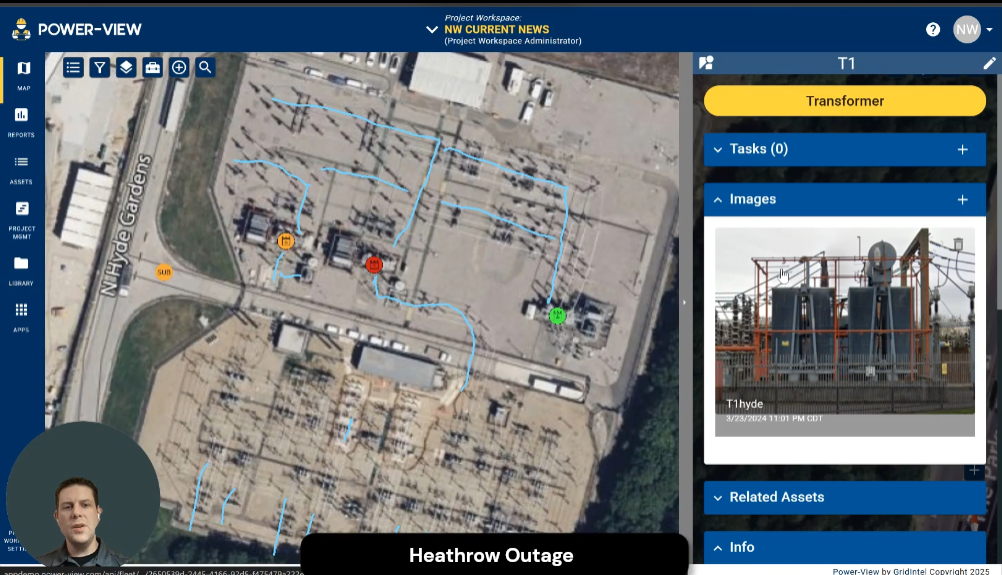Welcome to Current News in Power-View! I’m Dr. Nathan Wallace, and in this post, we’re diving into the recent power outage that affected Heathrow International Airport.
A Quick Overview
Heathrow Airport, built in 1946, is one of the busiest airports in the world. As of 2023, it handled around 80 million passengers per year. What’s truly impressive is that it manages this volume with just two parallel runways running east to west.
But even the most sophisticated infrastructures can experience setbacks. Last week, Heathrow faced a significant power outage late Thursday night that led to a full-day shutdown on Friday. Let’s explore what went wrong and why it happened.
The Incident Timeline
The outage occurred around 11:23 PM. Heathrow is typically powered by three substations, offering redundancy to ensure reliable operation. However, one of those substations—North Hyde—experienced a major transformer fire.
Unfortunately, the systems depending on that substation couldn’t automatically or manually switch over to the other available power sources. Due to safety concerns and the inability to sustain critical systems, officials made the decision to suspend airport operations on Friday.
Understanding the Infrastructure
Using the tools inside Power-View, we took a closer look at the distance between Heathrow and the North Hyde substation. It’s roughly 1 to 1.5 miles away. Zooming in further, we examined the electrical connections and layout.
North Hyde Substation is owned by National Grid and operates at 275 kV. It was likely built in the early 1950s, during a wave of infrastructure expansion across London and Europe.
We identified and labeled the three transformers for reference—T1, T2, and T3. T1, for instance, has a nearby water main that supports a robust fire suppression system, including a network of sprinklers designed to quickly control transformer fires.
The transformer that failed (T2) appears to be rated around 180 MVA with a voltage configuration of 275/66 kV, though this information is based on publicly available sources and should be taken with caution.
Debunking Misinformation
There’s an image circulating online suggesting mismatched voltage levels (400 kV on one side and 275/66 kV on the other). This is inaccurate. A visual inspection of the bushings and jumper cables shows clear size and height differences, indicating the actual voltages are consistent with the substation’s specifications.
What Caused the Fire?
Large power transformers like these are highly complex and can fail for a variety of reasons. Internally, they contain copper windings wrapped in insulating paper, operating under significant electromagnetic stress. These systems use oil for cooling, but over time, both mechanical and thermal stresses can degrade insulation and materials—eventually leading to failure.
It’s important to note that even new transformers can fail. That’s why proactive monitoring, routine maintenance, and redundancy planning are so critical to power system resilience.
The Aftermath
Photos of T2 show extensive fire damage, including burn marks and destroyed buswork. In fact, T1’s connectors appear to have melted entirely. Reports from emergency responders estimate that the failed transformer contained roughly 25,000 liters (about 6,600 gallons) of oil—typical for a transformer of this scale.
These transformers step down high-voltage electricity from the transmission grid to a safer distribution voltage. From North Hyde, the power flows via underground and overhead lines directly to Heathrow.
Interestingly, there’s also a combined heat and power (CHP) plant on site at Heathrow—known as the Energy Central facility. While it contributes to the airport’s energy needs, it likely doesn’t have the capacity to fully power the airport during a substation failure, which is why external power sources remain critical.
The Bigger Picture
Heathrow’s setup includes three external substations and some on-site generation. Still, this incident shows how even multiple redundancies can fall short when unexpected failures occur. Resiliency planning must consider not just the substations themselves but also the distribution infrastructure and the ability to reroute power in emergencies.
At Power-View, we’ll continue to monitor developments and provide more in-depth analysis as new information becomes available.
Thanks for checking out this first episode! Stay tuned—we’ll see you in the next one.
About the Author:
Dr Nathan Wallace, PE has BS degrees in Electrical Engineering, and Physics, a MS in Engineering, and a Ph.D. in Engineering from Louisiana Tech University. Nathan is a CoFounder and Director of GridIntel. Nathan is actively involved in the IEEE-PES PSRC and PSCC technical committees and currently chairs two IEEE standards development working groups. Nathan is a licensed PE in AL, LA, MS, OH, and TN.
